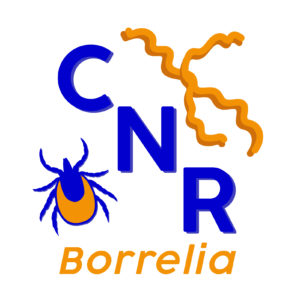L’interface cutanée joue un rôle clef dans les maladies à transmission vectorielle. Sur un modèle de borréliose de Lyme, nous étudions l’immunité innée de la peau en réponse à l’infection bactérienne et le rôle de la tique sur l’inflammation cutanée. L’étude se fait par deux approches. Un système in vitro (culture de kératinocytes et de fibroblastes) nous a permis de mettre en évidence le rôle clef de la salive de tique sur l’immunité innée de la peau. Un modèle in vivo (souris) nous a permis d’identifier par protéomique (spectrométrie de masse) des protéines de Borrelia essentielles dans la transmission et la persistance de la bactérie. Ces protéines sont actuellement utilisées dans la mise au point d’une nouvelle approche diagnostique chez l’homme lors d’infections précoces (données en cours d’analyse) et disséminées (étude clinique en cours).
La protéomique est aussi utilisée dans différentes études d’épidémiologie vectorielle : identification des tiques par MALI-TOF MS/MS, identification des pathogènes des tiques par nanoLC-MS/MS, analyse de la transmission de pathogènes chez la souris par protéomique non ciblée.
Nous étudions actuellement le rôle du microbiome cutané (patients) et de la tique (modèle murin) aucours de la piqûre de tique.
Dans le cadre de 2 projets CNRS (Zone atelier et observatoire-homme-milieu), nous étudions l’impact des pratiques humaines sur les populations de tique (Ixodes ricinus et Dermacentor spp.) et les maladies à tiques dans la région Grand Est. L’approche est multidisciplinaire avec les acteurs de terrain (chasseurs, forestiers, agriculteurs, grand public) et acteurs de la santé (médecins, pharmaciens, ARS, MSA, …).
The skin interface plays a key role in vector-borne diseases. In a model of Lyme borreliosis, we study the innate immunity of the skin in response to bacterial infection and the role of the tick on skin inflammation. The study is done by two approaches. An in vitro system (keratinocyte and fibroblast culture) allowed us to highlight the key role of tick saliva on innate immunity of the skin. An in vivo model (mouse) allowed us to identify by proteomics (mass spectrometry) Borrelia proteins essential in the transmission and persistence of the bacterium. These proteins are currently used in the development of a new diagnostic approach in humans during early infection (data under analysis) and disseminated (clinical study in progress).
Proteomics is also used in various vector epidemiology studies: identification of ticks by MALI-TOF MS/MS, identification of tick pathogens by nanoLC-MS/MS, analysis of pathogen transmission in mice by non-targeted proteomics.
We are currently studying the role of the skin microbiome (patients) and of the tick microbiome (mouse model) during the process of the tick bite.
In the framework of 2 CNRS projects (Zone atelier and observatoire-homme-milieu), we are studying the impact of human practices on tick populations (Ixodes ricinus and Dermacentor spp) and tick-borne diseases in the Grand Est region. The approach is multidisciplinary with field actors (hunters, foresters, farmers, public) and health actors (physicians, pharmacists, ARS, MSA, …).
Ixodes, Dermacentor
Borrelia burgdorferi sensu lato, B. miyamotoi, Anaplasma phagocytophilum, Rickettsia, Babesia, virus de l’encéphalite à tique, Neoerhlichia mikurensis
Pathogènes émergents
- Figoni J, Chirouze C, Hansmann Y, Lemogne C, Hentgen V, Saunier A, Bouiller K, Gehanno JF, Rabaud C, Perrot S, Caumes E, Eldin C, de Broucker T, Jaulhac B, Roblot F, Toubiana J, Sellal F, Vuillemet F, Sordet C, Fantin B, Lina G, Gocko X, Dieudonné M, Bodaghi B, Gangneux JP, Degeilh B, Partouche H, Lenormand C, Sotto A, Raffetin A, Monsuez JJ, Michel C, Boulanger N, Cathebras P, Tattevin P (2019) endorsed by scientific societies. Lyme borreliosis and other tick-borne diseases. Guidelines from the French Scientific Societies (I): prevention, epidemiology, Med Mal Infect. 2019 May 13. pii: S0399-077X(19)30116-7.
- Jaulhac B, Saunier A, Caumes E, Bouiller K, Gehanno JF, Rabaud C, Perrot S,Eldin C, de Broucker T, Roblot F, Toubiana J, Sellal F, Vuillemet F, Sordet C,Fantin B, Lina G, Sobas C, Gocko X, Figoni J, Chirouze C, Hansmann Y, Hentgen V, Cathebras P, Dieudonné M, Picone O, Bodaghi B, Gangneux JP, Degeilh B, Partouche H, Lenormand C, Sotto A, Raffetin A, Monsuez JJ, Michel C, Boulanger N, LemogneC, Tattevin P (2019) endorsed by scientific societies. Lyme borreliosis and other tick-borne diseases. Guidelines from the French scientific societies (II). Biological diagnosis, treatment, persistent symptoms after documented or suspected Lyme borreliosis. Med Mal Infect. 2019 Aug;49(5):335-346. doi:10.1016/j.medmal.2019.05.001. Epub 2019 May 31. Review. PubMed PMID: 31155367.
- Boyer P., Almeras L., Plantard O., Grillon G., Talagrand-Reboul E., McCoy K., Jaulhac B., Boulanger N. (2019) Identification of closely related Ixodes species by protein profiling with MALDI-TOF Mass Spectrometry, PLoS One. 14(10):e0223735. doi: 10.1371/journal.pone.0223735.
- Bernard Q., Grillon A., Lenormand C., Sabatier L., Boulanger N. (2020) Skin Interface, a Key Player for Borrelia Multiplication and Persistence in Lyme Borreliosis. Trends Parasitology, 2020 Jan 29. pii: S1471-4922(20)30010-6. doi: 10.1016/j.pt.2019.12.01
- Boyer P., Koetsveld J., Zilliox L., Sprong H., De Martino S., Hansmann Y., Boulanger N., Hovius JW., Jaulhac B. (2020) Evidence for Borrelia miyamotoi infection in post-tick bite febrile patients and ticks in an endemic area for Lyme borreliosis in France. Parasit Vectors. Apr 17;13(1):199. doi: 10.1186/s13071-020-04071-9.
- Lefeuvre B., Cantero P., Ehret-Sabatier , Lenormand C., Barthel C., Po C., Parveen N., Grillon A., Jaulhac B., Boulanger N. (2020) Effects of topical corticosteroids and lidocaine on Borrelia burgdorferi sensu lato in mouse skin: potential impact to human clinical trials. Scientific reports, un 29;10(1):10552. doi: 10.1038/s41598-020-67440-5.
- Talagrand-Reboul E, Westermann B, Raess MA, Schnell G, Cantero P, Barthel C, Ehret-Sabatier L, Jaulhac B,Boulanger N. (2020) Proteomic as an Exploratory Approach to Develop Vaccines Against Tick-Borne Diseases Using Lyme Borreliosis as a Test Case. Vaccines (Basel);8(3):E463. doi: 10.3390/vaccines8030463
- Boulanger N., Wikel S. (2021) Induced transient immune tolerance in ticks and vertebrate host: a keystone of tick-borne diseases? Immunol. doi: 10.3389/fimmu.2021.625993
- Boyer PH, Baldinger L, Degeilh B, Wirth X, Kamdem CM, Hansmann Y, Zilliox L, Boulanger N, Jaulhac B. (2021) The emerging tick-borne pathogen Neoehrlichia mikurensis: first French case series and vector epidemiology. Emerg Microbes Infect. Dec;10(1):1731-1738. doi: 10.1080/22221751.2021.1973347.
- Boyer PH, Barthel C, Mohseni-Zadeh M, Talagrand-Reboul E, Frickert M,
Jaulhac B., Boulanger N. (2022) Impact of Different Anthropogenic Environments on Ticks and Tick-Associated Pathogens in Alsace, a French Region Highly Endemic for Tick-Borne Diseases. Microorganisms, Jan 23;10(2):245. doi: 10.3390/microorganisms10020245.
- Borrelia
- tique
- peau
- immunologie
- PCR
- maladies à tique
- diagnostic
- vaccin
- Culture de cellules primaires cutanées
- modèle murin C3H/HeN de borréliose de Lyme
- Maldi-Tof : identification des tiques
- Anthropisation et maladies à tique

